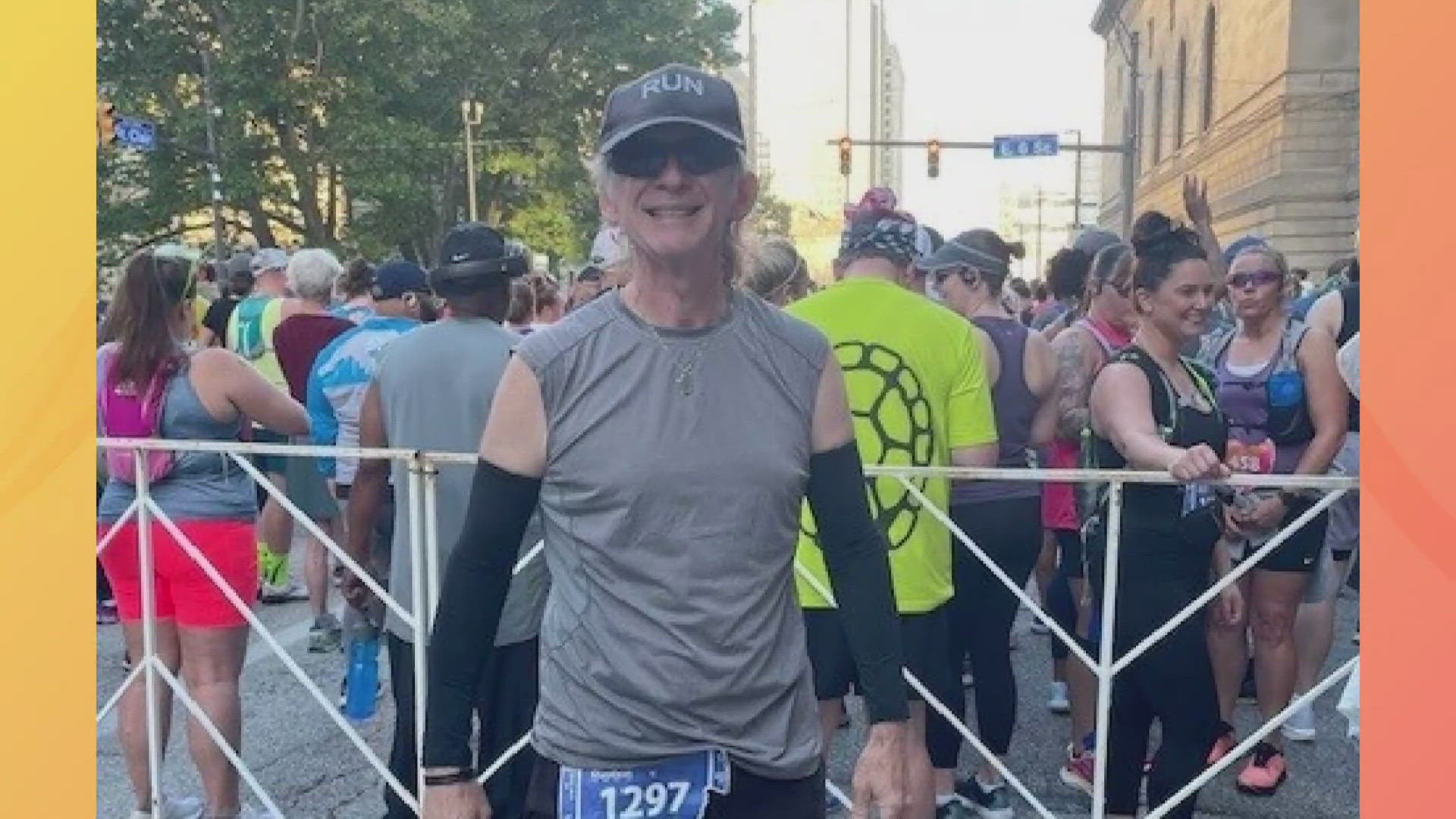YOUNGSTOWN, Ohio — John Zack has been running for 40 years. He started as part of a college class at West Virginia University and it became a habit that stuck with him.
"I consider myself a very, very healthy individual," John said.
The Cleveland Marathon would be the seventh marathon he'd run, but he had no idea it potentially might have been his last, ever.
Despite the fact that John watched his diet, regularly exercised and had no immediate family history of heart disease, one of his arteries was 95% blocked. It's an insidious risk factor that could happen to anyone.
John was determined to run a sub-five-hour marathon. He trained for seven months. On May 19, he started the race and the day went perfectly, although the temperature began rising and many runners were having issues with the heat.
John had a great run until mile 23.
"I started to develop some tightness in the chest, which I thought was a pulled pec muscle. Even with rotating my arm, twisting my body and alternating different speeds I was running, it just didn't seem to go away," John said.
He slowed to a jog, but the pain continued to get worse. Then cramping set in and he was forced to start walking.
"I'm thinking dehydration or a pulled muscle that I just can't get rid of. I didn't think anything as severe as a cardiac incident. That didn't even enter my mind," John said.
Of course it wouldn't. John's healthy. He has no immediate family history of heart disease, but when he finally walked across the finish line, he knew something was very wrong. He caught sight of his wife and waved her over and they both walked to the medical tent.
For the first time, John got the opportunity to meet three of the medical professionals who saved his life.
Once inside the medical tent, he was treated by Dr. Jeffrey Luk, an emergency medicine and emergency medical services (EMS) physician at University Hospitals, who specializes in prehospital and disaster medicine and serves as medical director for the Cleveland Marathon.
“You were alert and talking and telling us about your chest pain,” said Dr. Luk.
He explained that not all heart attack patients go unconscious. Some have what may seem to be milder or atypical symptoms, but all complaints of chest pain are taken seriously.
Dr. Luk performed an EKG on-site and identified that it was indeed a heart attack.
“At first there was some resistance, you didn't want to go to the hospital, but your wife convinced you," said Dr. Luk.
While still in the tent, Dr. Luk's team administered preliminary medications and activated the “cath lab” at UH Cleveland Medical Center to prepare for his arrival.
That's when paramedic Gavin Lucietta took over.
"John was the only person we transported that day," Lucietta said.
When John arrived at the hospital, he was taken to the cardiac catheterization laboratory -- “cath lab” for short -- where he met Dr. Tarek Hammad, interventional cardiologist with UH Harrington Heart & Vascular Institute.
"I was commenting to him that this was not a great idea to run 23 miles. That weekend was probably one of the hottest weekends we had this summer," Dr. Hammad said.
Dr. Luk added that most of the problems they'd seen that day were heat-related and that's what John initially thought was causing his issue.
While it's unknown if the heat was a factor in John's heart attack, it certainly put a strain on his heart to work harder to keep his core temperature cooler.
Once in the cath lab, Dr. Hammad's team found the real problem.
John's artery was 100% blocked – known as the “widowmaker.”
Dr. Hammad and his team first opened the blockage with a balloon. They then used a novel imaging technology called optical coherence tomography (OCT). Employing a high-resolution camera, they measured the exact size of John’s blocked vessel to identify the precise stent to place.
“As soon as we opened the blockage with the balloon his chest pain was gone,” said Dr. Hammad. “Mr. Zack left the cath lab with no chest pain and stable vitals.”
John left the hospital two days later and while he's wrapped up with cardiac rehab, he's certainly not done with running. He thought Cleveland would be his last marathon, but this experience lit a fire to perhaps try it again next year. Only this time, he'll have his heart checked beforehand, and he'll pay close attention to any symptoms.
For reference, when the artery is blocked by 70% or more, the buildup of arterial plaque may cause symptoms that include:
- Chest pain also known as angina
- Shortness of breath
- Heart palpitations
- Weakness or dizziness
- Nausea
- Sweating

